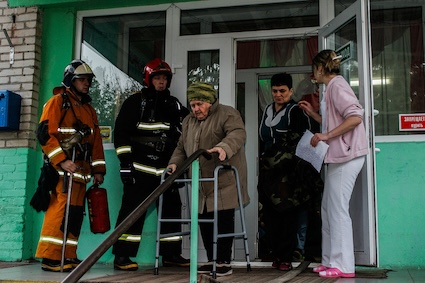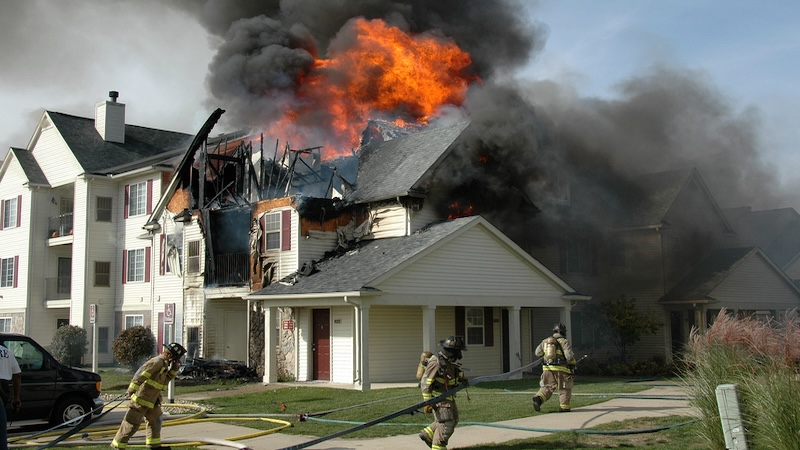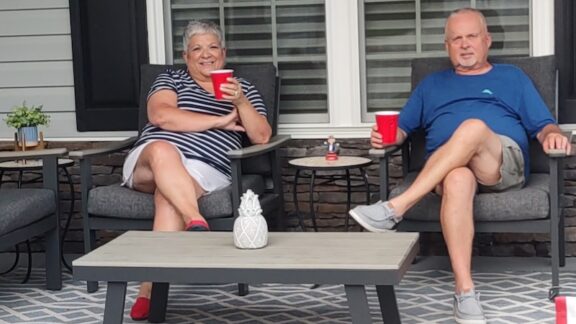Fire safety at senior living communities is a concern for everyone, and especially for residents and their families. How can you determine if a facility is prepared to keep its residents safe?
Fires present a risk for everyone but especially for older people because of their greater vulnerability to smoke inhalation and risk of complications from burns and other injuries. Impaired sight, smell, and hearing can also make it difficult for them to detect a fire and decreased mobility, dependence on medical equipment, and cognitive issues or medication can then slow their evacuation to escape the fire. In fact, studies show that nearly three-quarters of nursing home residents require assistance in emergency situations.
The fire at the Gabriel House Assisted Living Residence in Fall River, MA, on July 13, 2025 killed 10 people and injured dozens of others. The tragedy brought fire safety in senior living communities into the spotlight.
Unfortunately, this fire wasn’t an isolated occurrence. According to the National Fire Protection Association (NFPA), 1,896 fires occurred in residential board and care facilities between 2019 and 2023, including assisted living, halfway houses, and other long-term care facilities. Nursing homes are not included in this number, but data from 2015 puts that annual number at 2,760.
The causes of fires in senior living communities
In the Gabriel House fire, which started in a resident’s room, investigators are focusing on two possible causes. State Fire Marshal John Gavin told NBC, “One was an electrical or mechanical failure involving the oxygen concentrator [a medical device in the room]. The other was improper use or disposal of smoking materials.” Medical oxygen helped the fire spread, as it can in other medical facilities or a home where it’s in use.
In a 2012-2014 study by FEMA, the leading cause of nursing home fires was cooking. While most cooking fires are confined, appliances were responsible for most unconfined fires. According to the FEMA study, injuries resulting from fires in nursing homes were more than double that of other medical facilities.
Fire safety regulators

Nursing homes, skilled nursing facilities, and memory care facilities are all regulated by the Centers for Medicare and Medicaid Services (CMS). CMS establishes the fire safety standards for these healthcare facilities based on the National Fire Protection Association’s Life Safety Code (LSC) and Health Care Facilities Code (HCFC), partnering with state governments to ensure compliance with these regulations. Inspections are conducted at least annually. Importantly, the reports from these inspections are accessible to current and prospective residents and their families.
For assisted living communities, fire safety is regulated at the state level, with inspection frequency varying by state. Like nursing homes, the community must make these inspection reports available to the public. After the Gabriel House fire, all assisted living facilities in Massachusetts are being ordered to share their fire safety plans with residents and their families, including evacuation routes and instructions, and post them throughout the building. They are also required to complete a fire safety assessment survey, plus indicate the age of key fire safety systems and submit their latest emergency preparedness plan to the Executive Office of Aging & Independence, officials told NBC Boston.
Related:
Checklist on Home Safety for Aging in Place
How to Navigate Your Medicare Advantage in a Disaster
Emergency Preparedness Planning for Seniors
Determining if a community is prepared for a fire
If you or a loved one is moving to a senior living community, how do you know the community is prepared for a fire and can prevent a tragedy like the one at Gabriel House?
Check the official records
First, when considering a nursing home, memory care facility, or assisted living community for yourself or a loved one, it’s important to check that the facility’s fire safety inspections are up-to-date and the facility complies with all fire safety regulations. You can request records of past fires in senior living communities by contacting the local fire department or state fire marshal’s office.
Ask questions of the administrators
To feel confident about fire safety in the senior living community you are considering, it’s a good idea to take an extra step to learn about its fire safety protocols firsthand. Here are some questions to ask in your fact-finding mission:
1. Are residents educated about fire safety?
While most fires are out of the residents’ control, the community should inform seniors about safe cooking practices (if residents are able to cook in their rooms), proper use of appliances and medical devices, and guidelines for smoking inside the facility.
2. Where are smoke detectors and fire alarms located?
Make sure that the community has working smoke detectors in every resident’s room and in hallways and common areas. Alarms should be equipped with strobe lights for hearing-impaired residents.
3. Does the community have sprinkler systems and fire extinguishers?
When a fire starts, sprinkler coverage in rooms and common areas can help extinguish fires as well as contain them. Fire extinguishers should be easily accessed throughout the facility, and both staff and residents should know how to use them.
4. What’s the fire evacuation plan?
Ask about the community’s evacuation plan, including how residents are alerted of fires, assembly points, routes, and procedures for assisting residents. Staff should calmly and clearly communicate reassurance and guidance with residents throughout the evacuation process. Check to be sure that hallways, staircases, and exits have no obstructions and that these routes are accessible for those with disabilities. Signage marking the route and emergency lighting in case of a power outage are also critical.
5. How are staff and residents trained?
Ask about the frequency of fire drills and how staff are trained on fire prevention, use of fire safety equipment, and evacuation, especially when assisting residents with disabilities. Training sessions for both residents and staff should be conducted regularly to ensure everyone is prepared for an emergency.
Fires can happen even in the best senior living communities. While you can’t singlehandedly prevent them, you can (and should) investigate measures taken for fire safety at senior living communities that you or your loved one are considering. Ensure that they are proactive in avoiding fires, are equipped to handle a fire should it occur, and that staff and residents are trained to evacuate to safety. If you don’t get it right the first time, there may not be a second opportunity.





